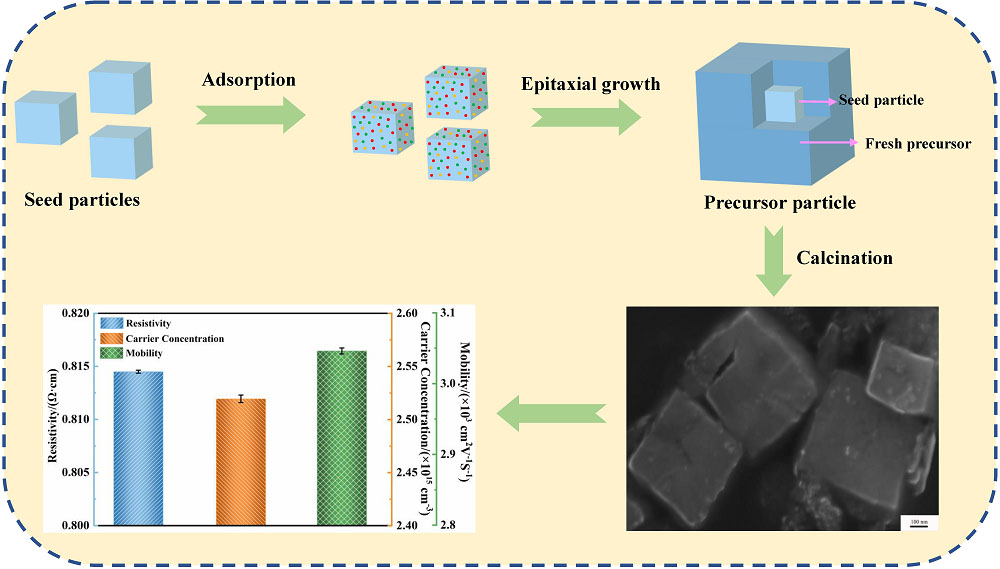Resistivity is an important parameter to assess the properties of ITO powders [
2]. To obtain low-resistivity ITO powders, single factor experiment was conducted and each experiment was repeated three times for reproducibility and accuracy. Fig.2 shows the effects of seed content, In
3+ concentration, aging time, reaction temperature and calcination temperature on the resistivity of ITO powders. As shown in Fig.2(a), the minimum resistivity of ITO powders occurred at seed content of 6 wt %. In this work, ITO powders were prepared by thermal dehydration of precursor particles, therefore the dispersion of precursor particles could affect that of ITO powders. Also, the larger grain size of precursor particles was, the larger grain size of ITO powders was. According to a previous study, the grain size is considered a significant factor that controls the resistivity of ITO powders [
25]. This is because grain size can affect the number of grain boundary, namely, the larger the grain size is, the smaller the grain boundary number is, resulting in a reduced grain boundary scattering and improved electron mobility, thus the resistivity of ITO powders decreased [
26,
27]. In mixed salt solution, the addition of seed particles composed of indium tin hydroxide promoted the crystallization of ITO precursor particles. The crystallinity and grain size of precursor particles increased with increasing seed content [
28], which is beneficial to obtaining ITO powders with large grain size and thus decreasing the resistivity. In Fig.2(b), the resistivity decreased first and then steadily rose with In
3+ concentration increase and reached a minimum value at 0.04 mol·L
–1. With In
3+ concentration increasing, the amount of In
3+ attaching to the surface of seed particles was increased, which led to the larger grain size of precursor particles. Unfortunately, excessive In
3+ concentration caused serious agglomeration of powders. It has been reported that the poor dispersion of ITO powders could result in higher resistivity [
29]. Fig.2(c) shows that the resistivity achieves the lowest value of 3.54 Ω·cm at 8 h. Because the grain size of precursor particles could grow larger with prolonged aging time [
30], the resistivity of ITO powders showed a downward trend. However, when aging time continued to increase, the single precursor particles were gathered together due to the collision between particles [
31], which deteriorated the dispersion of precursor particles, leading to resistivity increase of ITO powders. Fig.2(d) shows that the resistivity reaches the lowest point at 80 °C. The decomposition temperature of urea is 74 °C [
32], and when the reaction temperature is higher than 74 °C, OH
– and CO
2 can be generated in the solution [
33]. The generation rate of OH
– increased with increasing reaction temperature, which promoted the increase in grain size of precursor particles [
34]. However, when the reaction temperature was above 80 °C, excessive generation of OH
– may cause inhomogeneous growth of precursor particles, resulting in the poor dispersion and high resistivity of ITO powders. As shown in Fig.2(e), the resistivity decreased first and then increased with increasing calcination temperature. It could be clearly observed that the resistivity was lowest at 750 °C. It has been reported that rising calcination temperature can increase the grain size of ITO powders, which is beneficial for electron transfer and lower resistivity [
12]. Nevertheless, when the calcination temperature was higher than 750 °C, the dispersion of ITO powders became poor and hard agglomerates were formed [
35], which increased the grain boundary scattering and resistivity of powders.












